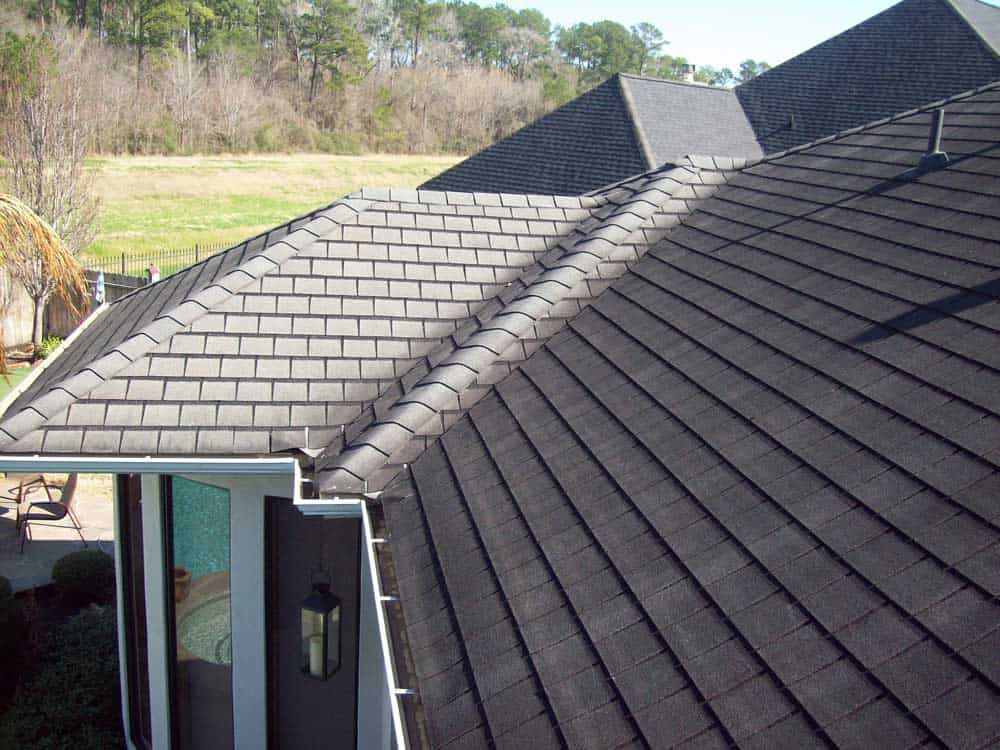The roof is the most important part of your house. It’s there to protect you and your family from outside elements. So it’s important that you know when your roof needs replacement.
Asphalt shingles are some of the most common material that roofs are made of. They are typically less expensive and easy to install.
In this blog post, we’ll look at the signs that your asphalt shingle roof needs replacement and the steps you can take to get this done.
 Types of Asphalt Shingles
Types of Asphalt Shingles
Typically, asphalt shingles can come in two types: organic shingles and fibreglass shingles.
Organic shingles are the oldest type of shingle and are more flexible than fibreglass shingles. They are also easier to install in cold weather. The ‘organic’ part of these shingles is a cellular substrate, often from recycled paper, that is fused with asphalt and high pressure. Organic shingles are much heavier than fibreglass shingles and are therefore, more effective in high wind areas.
Fibreglass shingles are much lighter in weight than organic shingles due to the fact that not as much asphalt is used in its manufacturing. They are overall more popular in its modern use for new roofs. It is recommended that a layer of asphalt-saturated felt be installed first before asphalt shingles are laid down.
The Layers of Asphalt Shingle Tiles
It’s important to understand the layers of asphalt shingles as issues with one or more of these components, over time, can lead to the need to replace them.
The top layer is the granular surface layer that provides colour and UV protection. The second layer is a layer of asphalt that acts as a waterproofing agent for your roof. The next layer is a base layer or mat layer. The base of organic shingles is made of asphalt felt while fibreglass shingles have a glass mat as the base.
Typically, there is another layer of asphalt to bottom out the shingle.
Risks of a Damaged Roof
If your roof is damaged in any way, the likelihood of you being able to protect your family’s’ health from deteriorating is slim if ignored over time.
Here are some health issues that evolve with a leaky, damaged, and unaddressed roof:
- Mold and Mildew are formed which can travel into your clothes, carpets, walls, furniture and other objects damaging the wood and the structure of your house. This can lead to a costly removal. Also, mold and mildew cause asthma, nasal congestion, rhinitis inflammations, allergic reactions and more serious health problems.
- A leaky roof can be a cause of a major fire as the electrical wires can be short-circuited due to the water or even an electric shock. These two are the scariest items as they have very damaging effects mentally, physically and emotionally.
Signs that your Asphalt Shingle Roof Needs Replacement
There are a number of ‘symptoms’ you can look out for to figure out wear and tear on your roof. So let’s list out the signs your asphalt shingle roof needs replacement:
- The age of your roof if it is more than 20-25 years old
- Your shingles are curling or buckling
- Missing shingles/roof valleys
- You find granules of shingles in your gutter
- You see the sun shining through your house from the roof
- You have moss on your roof
- Your shingles have been blown off the roof and landed on the ground
- Damaged flashing
- Roof and interior showing signs of water damage
If you notice anyone of these signs you need to call a professional who can then help you with your roof and fix it correctly. “Do it yourself” repairs are dangerous, not only for your own health but for the health of the roof. Get a professional to do the job right the first time.







